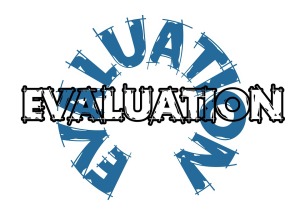
Evaluation is a critical part of most projects. This is the stage at which the digitised notes mapping the process, ongoing feedback and personal reflections you have gathered can support an account of what went well, what could have been done differently and scope for future work.
The evaluation of a project should demonstrate both successes and failures, and what you have learned from the experience. This will enable you to identify what you might be able to do in future projects.
Questions to consider
- What are the strengths and weaknesses of your project?
- What were the limitations of your project?
- Which objectives did you meet and why?
- What is the significance of your project results?
- Given further time what more could you have done?
- Do you have suggestions for future research?
(This could be a starting point for someone else to continue the work you have begun)
How you collate this information will depend on the requirements of your project. Typically an evaluation might be a chapter in a dissertation or a section in a report, and would be written. However there may be opportunities to create a podcast or video. You might choose to create a blog as a space to gather the evaluation. If this is a collaborative activity, then perhaps a shared Google Doc would be useful. You will also need to consider if the evaluation is to be shared publicly or privately between selected people.
Below are some examples of tools you can explore as spaces to evaluate your work.
DIGITAL TOOLKIT

Google Docs
Google Docs is a free word processor program, which allows users to create and edit documents online while collaborating with other users in real-time. Users can also leave comments and engage in live chat.
https://docs.google.com/document/
Slack
Slack is a cloud-based team collaboration tool where chat rooms (channels) are organised by topic. It is also possible to create private groups and direct messaging. All content inside Slack is searchable, including files, conversations, and people.
http://slack.com/
AudioBoom
This is an audio and podcast platform. The app allows users to record audio and provides embeddable media players that can be add to blogs and websites.
https://audioboom.com/
YouTube
A video hosting service where registered users are permitted to upload an unlimited number of videos.
https://www.youtube.com/
Screencast-o-matic
This is video capture software that enables the user to record whatever is on their desktop screen, with the option of video narration. Recorded screen captures can be saved as a file or uploaded to YouTube or Google Drive.
http://screencast-o-matic.com/
WordPress
This is a blog web hosting service. Registration is required to own, or post in a weblog. Themes allow users to change the look and functionality of a WordPress website and users may install and switch between different themes without altering the content of the site.
https://wordpress.com/
Blogger
Blogger is a blog-publishing service that allows multi-user blogs with time-stamped entries. Users can choose from various templates and then customise them.
https://www.blogger.com/
OneNote
Microsoft OneNote is a computer program for free-form information gathering and multi-user collaboration. It gathers users’ notes (handwritten or typed), drawings, screen clippings and audio commentaries. Notes can be shared with other OneNote users over the Internet or a network.
http://onenote.com/


